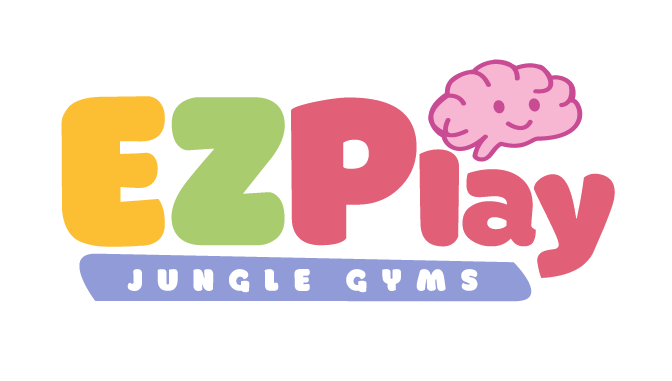
Obstacle Courses Build Better Brains: Here’s Why Every Home Needs One 🧠🏃♂️
Ever wonder why your child lights up when they crawl under a chair, climb over a cushion, or jump off a step?
It’s because their brain thrives on challenge.
Obstacle courses are one of the best tools to support your child’s cognitive development, gross motor milestones, problem-solving skills, and emotional regulation — all in one go.
Let’s break down why obstacle courses are such a powerful brain-building tool (and how you can make one at home with just a few EZPlay pieces!).👇
🧠 The Brain Science Behind Obstacle Courses
1. They Build the Body Map
Moving over, under, around, and through obstacles helps kids develop proprioception — the ability to know where their body is in space. This improves posture, coordination, and safety.
2. They Support Bilateral Integration
Crossing midline (like crawling under or stepping over) helps the brain integrate the left and right hemispheres — critical for reading, writing, and motor coordination.
3. They Fire Up Motor Planning Skills
Kids must figure out how to move their body through a sequence of challenges. This builds executive function, working memory, and flexibility in thinking — core skills for life and learning.
4. They Activate Multiple Brain Regions at Once
The best kind of brain development happens when kids are moving with purpose. Obstacle courses engage the vestibular system, cerebellum, sensory processing centers, and prefrontal cortex — all at once.
👶 Start Early: Obstacle Courses for Babies?
Yes — you can start as early as 1 month old.
Using rolled blankets, your lap, pillows, or a baby-safe incline, you can help your infant explore gravity, activate reflexes, and build the foundation for crawling.
Sliding over a wedge, rolling from side to side, or crawling through tunnels becomes brain-boosting play with a purpose.
🛝 How to Build an Obstacle Course at Home (No Pinterest Mom Skills Required!)
You don’t need a ton of space or fancy equipment. Just mix and match a few EZPlay pieces:
💪 Start With a Base:
-
EZPlay Panda Playground or Koala Adventure
Use the slide, climbing bars, or hanging attachments as the center of your course.
🧸 Add Texture + Support:
-
Wobble Balance Board for walking, crawling, or jumping
-
Plush Baby Mat for soft crawling or rolling
-
Teepee Tent as a tunnel or cozy checkpoint
🌀 Include Brain-Building Actions:
-
Climb over (Koala bars or arch)
-
Crawl under (slide ramp, low stools, your legs)
-
Spin (hang and spin on a trapeze)
-
Jump off (onto a mat or wobble board)
-
Balance (on the arch or board)
👉 Shop Indoor Gym Sets
👉 Grab Brain-Building Accessories
🧠 What Glenn Doman Taught About Movement
Glenn Doman believed children should be “trained as athletes to become scholars.”
Obstacle courses are the ultimate training ground — full-body movement that strengthens the brain’s ability to think, process, and plan.
If your child is struggling with transitions, attention, or milestone delays — a few minutes of obstacle course play per day can work wonders.
✅ Quick Obstacle Course Ideas by Age
1–6 Months:
-
Lay baby on a play mat with obstacles to look at and roll toward
-
Add a wedge for gentle tummy-time incline play
6–12 Months:
-
Crawl over couch cushions, under chairs, through a teepee
-
Include a mirror at the end for fun reward + motivation
1–2 Years:
-
Climb, jump, crawl through tunnels (use slide + arch + mats)
-
Encourage hanging and spinning between stations
3–5 Years:
-
Add simple instructions or themes (e.g., “Rescue the bear!”)
-
Time the course to build focus and memory
📣 From a Pediatric Chiropractor’s Perspective
In my practice, I see obstacle courses regulate overwhelmed nervous systems, improve balance, and support faster milestone progression.
Even 5 minutes a day can change a child’s development trajectory.It’s not just play — it’s therapy that feels like fun.








